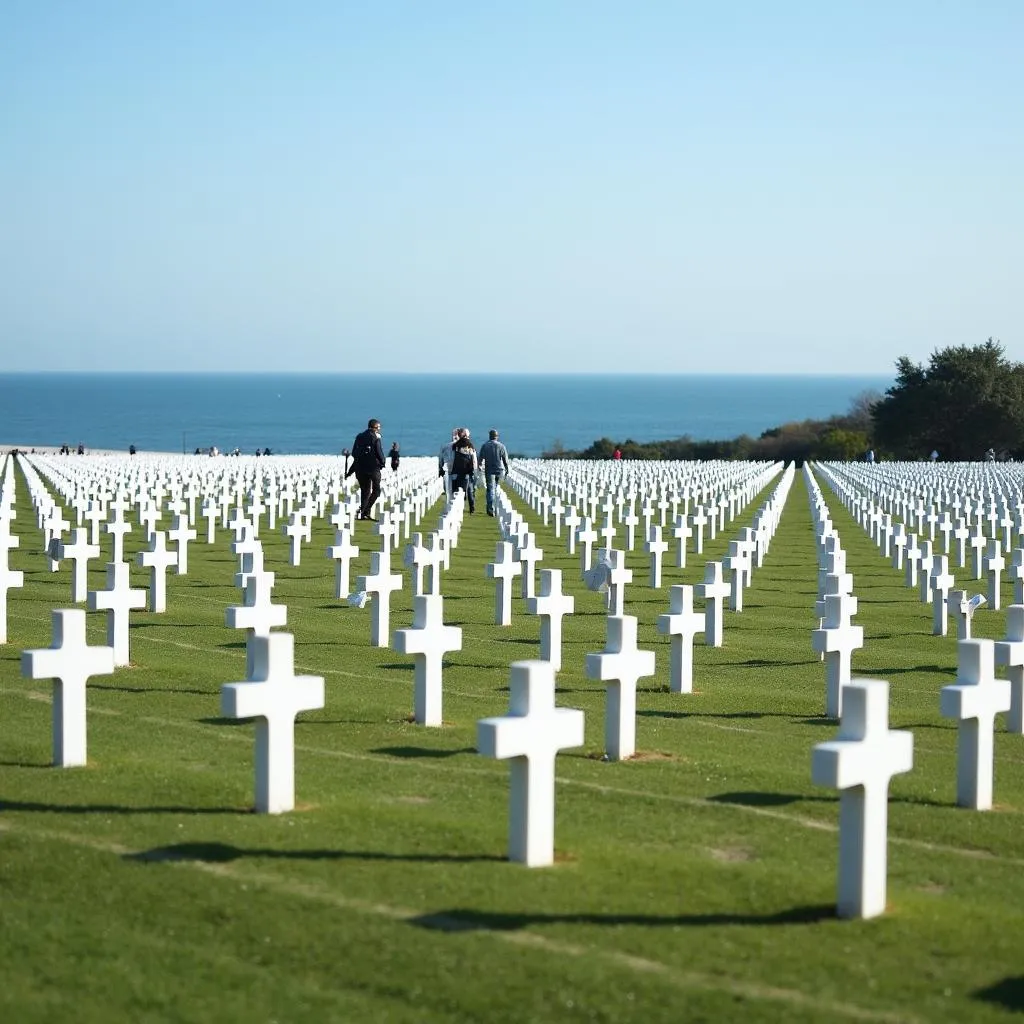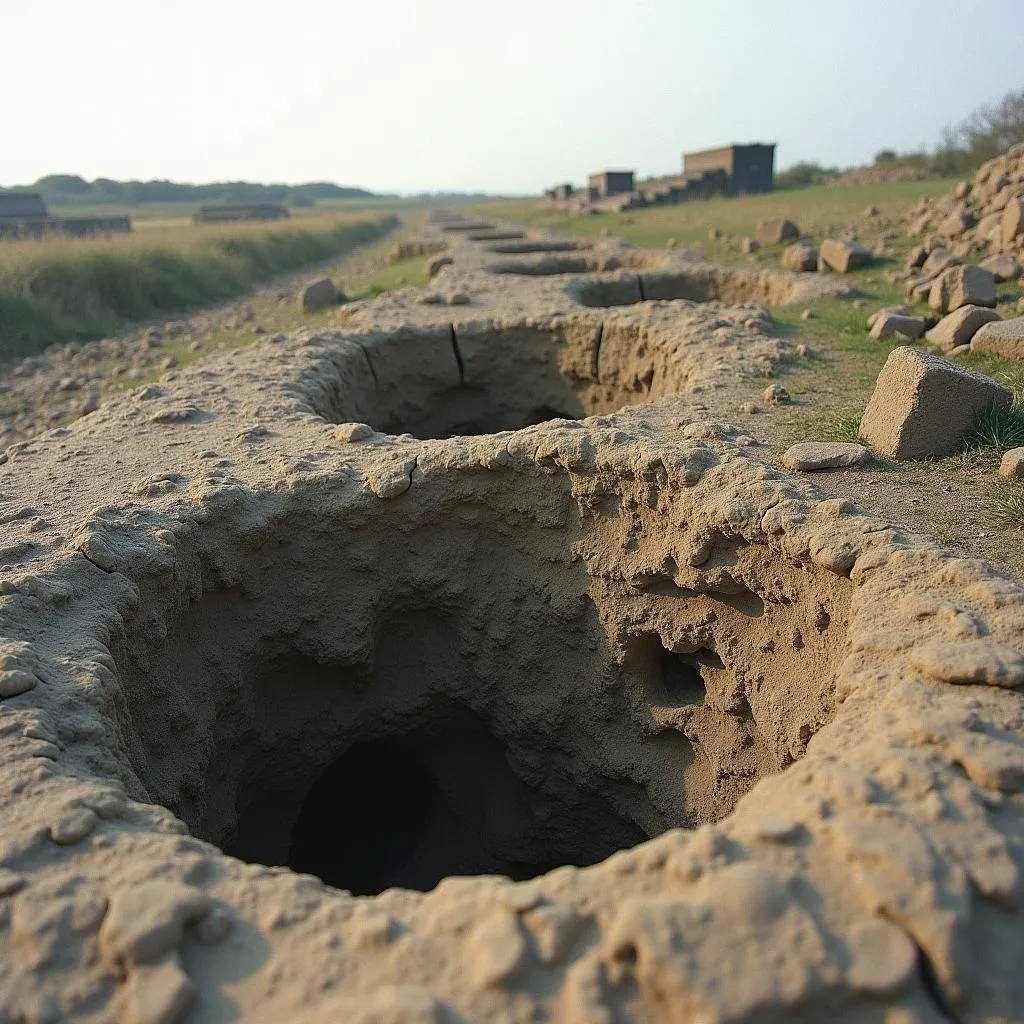“Time travels in circles,” my grandfather used to say, his eyes twinkling with a lifetime of memories. He often shared stories about his experiences during World War II, especially the monumental events of D-Day. His words always echoed in my mind whenever I thought about visiting the D-Day landing beaches – a poignant reminder that history is not just dates in a textbook, but echoes of real lives and stories waiting to be discovered.
If you’re considering a journey to these hallowed grounds, this traveller’s guide to D-Day will help you plan a meaningful and informative trip. We’ll explore the historical significance of this pivotal event, offer practical advice on what to see and do, and delve into how best to experience the profound emotions etched into this landscape.
Understanding D-Day: A Defining Moment in History
Before embarking on your journey, it’s crucial to understand the magnitude of what unfolded on June 6th, 1944. Operation Overlord, better known as D-Day, marked the beginning of the end of World War II. Thousands of Allied troops landed on the beaches of Normandy, France, in a courageous assault against Nazi Germany’s forces. This pivotal operation ultimately led to the liberation of France and paved the way for the Allied victory in Europe.
Planning Your D-Day Pilgrimage
Visiting the D-Day landing beaches is an emotional experience. To ensure a respectful and insightful trip, careful planning is essential. Here’s what you need to consider:
When to Visit
Normandy experiences a temperate climate, making spring and fall ideal times to visit. The weather is pleasant, and the crowds are smaller compared to the peak summer months. June 6th, the anniversary of D-Day, draws large crowds for commemorative events.
Getting There and Around
The closest airport to the D-Day landing beaches is Caen Carpiquet Airport (CFR), while Paris Charles de Gaulle Airport (CDG) offers more international connections. Renting a car provides flexibility for exploring the region at your own pace. Alternatively, guided tours and public transportation are readily available.
Where to Stay
The towns of Bayeux, Caen, and Arromanches offer a range of accommodation options. Consider staying in a charming guesthouse or a hotel with historical significance to enhance your experience.
Must-See D-Day Sites: Walking in the Footsteps of Heroes
Omaha Beach: The most famous and deadliest of the landing beaches, Omaha Beach is now a place of serene beauty. Visit the Normandy American Cemetery and Memorial, overlooking the beach, to pay your respects to the fallen soldiers.
Utah Beach: Witness remnants of the artificial harbor built by the Allies and explore the Utah Beach Landing Museum to gain a deeper understanding of the events that transpired here.
 Normandy American Cemetery and Memorial
Normandy American Cemetery and Memorial
Pointe du Hoc: Perched atop a cliff overlooking the English Channel, Pointe du Hoc was a strategic German battery captured by US Rangers in a daring assault. Explore the bomb craters and fortifications, and imagine the bravery displayed by the soldiers who fought here.
Arromanches: Witness the ingenuity of the Mulberry Harbors, artificial ports constructed by the Allies to facilitate the unloading of supplies. The Arromanches D-Day Museum provides a fascinating glimpse into the engineering marvels of wartime.
Peace Memorial, Caen: Dedicated to peace and reconciliation, the Peace Memorial in Caen offers a comprehensive overview of World War II and its aftermath.
 Pointe du Hoc Bomb Craters
Pointe du Hoc Bomb Craters
Beyond the Beaches: Exploring Normandy’s Rich Heritage
While the D-Day landing beaches are the main draw, Normandy offers much more to discover:
- Bayeux Tapestry: This 230-foot-long embroidered cloth depicts the events leading up to the Norman Conquest of England in 1066.
- Mont Saint-Michel: Marvel at the iconic Mont Saint-Michel, a UNESCO World Heritage Site, rising majestically from the tidal flats.
- Honfleur: Explore the picturesque harbor town of Honfleur, renowned for its colorful houses and charming ambiance.
Tips for a Meaningful D-Day Experience
- Hire a Local Guide: Consider hiring a local guide with historical expertise to enhance your understanding and gain deeper insights into the events of D-Day.
- Allow Ample Time: Don’t rush your visit. Allow ample time to absorb the history and pay your respects at the memorials.
- Read Before You Go: Familiarize yourself with the history of D-Day through books, documentaries, or online resources to deepen your appreciation for the significance of the sites you’ll be visiting.
- Reflect and Remember: Take moments to reflect on the sacrifices made and the bravery displayed by those who fought for freedom.
FAQs about Visiting the D-Day Landing Beaches
Q: How far are the D-Day landing beaches from Paris?
The D-Day landing beaches are approximately a 2.5 to 3-hour drive from Paris.
Q: Are there guided tours available?
Yes, numerous guided tours are available from Paris and other major cities in Normandy, offering transportation and expert commentary.
Q: What is the best time of year to visit?
Spring and fall offer pleasant weather and fewer crowds compared to the summer months.
Conclusion: A Journey of Remembrance and Reflection
A journey to the D-Day landing beaches is a poignant reminder of the sacrifices made for freedom and the indomitable spirit of those who fought for it. As you stand on the hallowed grounds of Normandy, let the stories of courage and resilience wash over you, etching this experience into your memory forever. Remember, travel isn’t just about seeing new places; it’s about understanding our shared history and honoring the legacy of those who came before us.
For more insights into historical travel destinations, be sure to visit TRAVELCAR.edu.vn and embark on a journey of discovery.
